Click to enlarge
Porsche has released photos and information on the facelifted Cayenne, and as expected, the front of the Cayenne gets the brunt of the changes, with the rear end getting a few mild touch ups.
The new front clip does more to separate the base V6 model from its range topping sibling, eschewing the old Turbo styling cues with fewer gapping air ducts and turn signal indicators being pushed to the outside of the air dams. Moving up into the range, the new triangular headlamps remain on the Turbo model, but the turn signals go horizontal, ala Cayman and Turbo, the air intakes open wider and a duo of "power streaks" flank the hood on both edges.
The rear of the new Cayenne gets a subtly smoothed-over bumper with pass-thrus for the exhaust tips and new taillights, both of which are less than noteworthy.
The major changes come in the form of three new engines that will provide the proper amount of motivation for Porsche's big, ugly duckling. The old 3.2-liter V6 has been nixed in favor of the 3.6-liter V6 found in the new Touareg, producing 290 HP in the base model. The Cayenne S gets a 4.8-liter V8, up from 4.5-liters in the outgoing model, to produce 380 HP and 370 ft.-lbs. of torque. At the high end of the range, the new Cayenne Turbo receives a power boost to 500 HP and 516 ft.-lbs. of twist, likely to dispatch the 0-60 in 5.1 seconds, then continuing to a top speed of 171 MPH.
(Gallery, press release after the jump)
[Source: Porsche]
GALLERY
Click images to enlarge
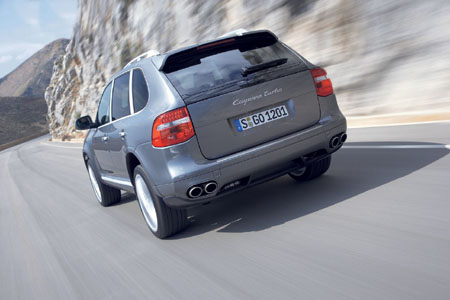
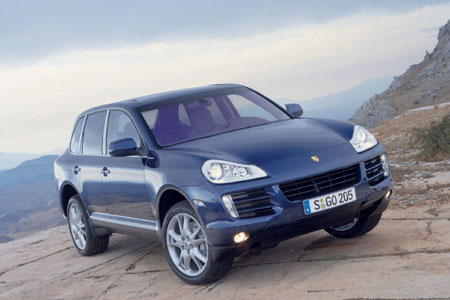
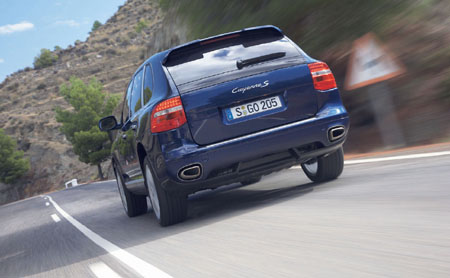
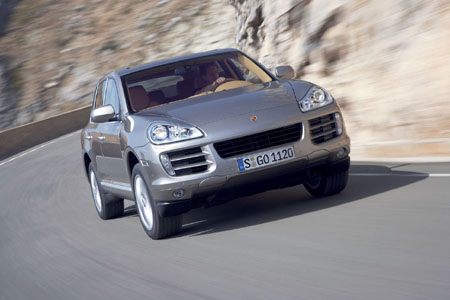
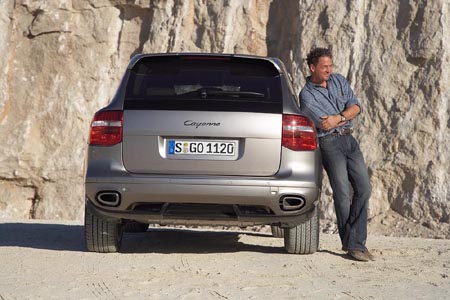
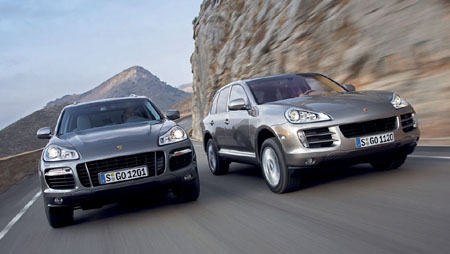

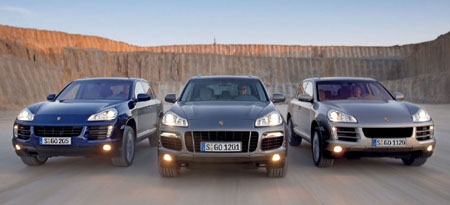
PRESS RELEASE:
The New Cayenne: More Performance, Less Consumption
Stuttgart. The Cayenne is starting a new chapter in its success story: four years after the model's launch, Dr. Ing. h.c. F. Porsche AG of Stuttgart, Germany, is presenting the second generation of its sporty SUV. The new, attractively designed Cayenne, Cayenne S and Cayenne Turbo models have been given more powerful, direct gasoline injection engines. These are known at Porsche as Direct Fuel Injection (DFI), and they lower the fuel consumption of individual models by over eight percent (NEDC). In real driving conditions, savings of up to 15 percent are possible. The new Cayenne will be in Porsche showrooms from February 24, 2007.
The basic version of this sporty SUV has a 40-bhp (29-kW) power enhancement and is now driven by a 290-bhp (213-kW) six-cylinder engine, the displacement of which has increased from 3.2 to 3.6 liters. The torque of the Cayenne has climbed from 310 to 385 Nm. It can accelerate from 0 to 100 km/h in 8.1 seconds, reaching a top speed of 227 km/h. The previous model managed 9.1 seconds and 214 km/h.
Thanks to new direct gasoline injection and the introduction of VarioCam Plus valve control, the Cayenne S, now with an even bigger 4.8-liter, naturally aspirated V8 engine, produces a torque of 500 Nm (previously 420 Nm) and an output of 385 bhp (283 kW), an increase of 45 bhp (33kW). These higher figures translate into a 0-100 time of 6.6 seconds and a top speed of 252 km/h. (Previous model: 6.8 seconds and 242 km/h.) The performance figures for the new Cayenne Turbo are also impressive, with an engine output 50 bhp (37 kW) higher than that of its predecessor. The new eight-cylinder engine, driven by a twin exhaust-gas turbocharger, produces 500 bhp (368 kW) and 700 Nm (previously 620 Nm). This Turbo can race from 0-100 km/h in 5.1 seconds and has a maximum speed of 275 km/h. (Previous model: 5.6 seconds and 266 km/h.)
As before, optimum power transmission is ensured by Porsche Traction Management (PTM) which, in standard operating mode, distributes engine power between the rear and front wheels in a ratio of 62:38. The multi-disk clutch can direct up to 100 percent of drive traction to the front or rear as required.
The Cayenne Turbo is fitted with Porsche Active Suspension Management (PASM) with air suspension as standard. This variant can now be augmented with the new Porsche Dynamic Chassis Control (PDCC) roll stabilizer system. This constant roll control, also available for the Cayenne and Cayenne S, limits vehicle roll on corners and counterbalances it completely in almost all driving situations. The Cayenne thus offers significant improvements in terms of handling, directional stability and ride comfort. When off-road, the system enables maximum axle articulation and improves traction.
Porsche Stability Management (PSM), with its brake assist function, advanced trailer stabilization system and off-road ABS, comes as standard on all Cayenne models. These functions improve the brakes' reaction speed, markedly reduce the yawing which can affect vehicles when towing, and optimize braking performance on loose ground. What's more, with static and, for the first time, dynamic bend lighting, the bi-xenon headlamps fitted as standard to the Cayenne Turbo increase active safety. The system, which can also be ordered for the Cayenne and Cayenne S, is activated as soon a speed of three kilometers per hour has been reached.
The Euro-base price for the Cayenne is 43,300 Euros, while for the Cayenne S it is 55,800 Euros. The Cayenne Turbo is priced at 91,100 Euros. In Germany, the Cayenne costs 51,735 Euros, while the more powerful S version retails at 66,610 Euros. The top model Cayenne Turbo has a list price of 108,617 Euros (including 19 percent sales tax and country-specific requirements).
Porsche has released photos and information on the facelifted Cayenne, and as expected, the front of the Cayenne gets the brunt of the changes, with the rear end getting a few mild touch ups.
The new front clip does more to separate the base V6 model from its range topping sibling, eschewing the old Turbo styling cues with fewer gapping air ducts and turn signal indicators being pushed to the outside of the air dams. Moving up into the range, the new triangular headlamps remain on the Turbo model, but the turn signals go horizontal, ala Cayman and Turbo, the air intakes open wider and a duo of "power streaks" flank the hood on both edges.
The rear of the new Cayenne gets a subtly smoothed-over bumper with pass-thrus for the exhaust tips and new taillights, both of which are less than noteworthy.
The major changes come in the form of three new engines that will provide the proper amount of motivation for Porsche's big, ugly duckling. The old 3.2-liter V6 has been nixed in favor of the 3.6-liter V6 found in the new Touareg, producing 290 HP in the base model. The Cayenne S gets a 4.8-liter V8, up from 4.5-liters in the outgoing model, to produce 380 HP and 370 ft.-lbs. of torque. At the high end of the range, the new Cayenne Turbo receives a power boost to 500 HP and 516 ft.-lbs. of twist, likely to dispatch the 0-60 in 5.1 seconds, then continuing to a top speed of 171 MPH.
(Gallery, press release after the jump)
[Source: Porsche]
GALLERY
Click images to enlarge








PRESS RELEASE:
The New Cayenne: More Performance, Less Consumption
Stuttgart. The Cayenne is starting a new chapter in its success story: four years after the model's launch, Dr. Ing. h.c. F. Porsche AG of Stuttgart, Germany, is presenting the second generation of its sporty SUV. The new, attractively designed Cayenne, Cayenne S and Cayenne Turbo models have been given more powerful, direct gasoline injection engines. These are known at Porsche as Direct Fuel Injection (DFI), and they lower the fuel consumption of individual models by over eight percent (NEDC). In real driving conditions, savings of up to 15 percent are possible. The new Cayenne will be in Porsche showrooms from February 24, 2007.
The basic version of this sporty SUV has a 40-bhp (29-kW) power enhancement and is now driven by a 290-bhp (213-kW) six-cylinder engine, the displacement of which has increased from 3.2 to 3.6 liters. The torque of the Cayenne has climbed from 310 to 385 Nm. It can accelerate from 0 to 100 km/h in 8.1 seconds, reaching a top speed of 227 km/h. The previous model managed 9.1 seconds and 214 km/h.
Thanks to new direct gasoline injection and the introduction of VarioCam Plus valve control, the Cayenne S, now with an even bigger 4.8-liter, naturally aspirated V8 engine, produces a torque of 500 Nm (previously 420 Nm) and an output of 385 bhp (283 kW), an increase of 45 bhp (33kW). These higher figures translate into a 0-100 time of 6.6 seconds and a top speed of 252 km/h. (Previous model: 6.8 seconds and 242 km/h.) The performance figures for the new Cayenne Turbo are also impressive, with an engine output 50 bhp (37 kW) higher than that of its predecessor. The new eight-cylinder engine, driven by a twin exhaust-gas turbocharger, produces 500 bhp (368 kW) and 700 Nm (previously 620 Nm). This Turbo can race from 0-100 km/h in 5.1 seconds and has a maximum speed of 275 km/h. (Previous model: 5.6 seconds and 266 km/h.)
As before, optimum power transmission is ensured by Porsche Traction Management (PTM) which, in standard operating mode, distributes engine power between the rear and front wheels in a ratio of 62:38. The multi-disk clutch can direct up to 100 percent of drive traction to the front or rear as required.
The Cayenne Turbo is fitted with Porsche Active Suspension Management (PASM) with air suspension as standard. This variant can now be augmented with the new Porsche Dynamic Chassis Control (PDCC) roll stabilizer system. This constant roll control, also available for the Cayenne and Cayenne S, limits vehicle roll on corners and counterbalances it completely in almost all driving situations. The Cayenne thus offers significant improvements in terms of handling, directional stability and ride comfort. When off-road, the system enables maximum axle articulation and improves traction.
Porsche Stability Management (PSM), with its brake assist function, advanced trailer stabilization system and off-road ABS, comes as standard on all Cayenne models. These functions improve the brakes' reaction speed, markedly reduce the yawing which can affect vehicles when towing, and optimize braking performance on loose ground. What's more, with static and, for the first time, dynamic bend lighting, the bi-xenon headlamps fitted as standard to the Cayenne Turbo increase active safety. The system, which can also be ordered for the Cayenne and Cayenne S, is activated as soon a speed of three kilometers per hour has been reached.
The Euro-base price for the Cayenne is 43,300 Euros, while for the Cayenne S it is 55,800 Euros. The Cayenne Turbo is priced at 91,100 Euros. In Germany, the Cayenne costs 51,735 Euros, while the more powerful S version retails at 66,610 Euros. The top model Cayenne Turbo has a list price of 108,617 Euros (including 19 percent sales tax and country-specific requirements).
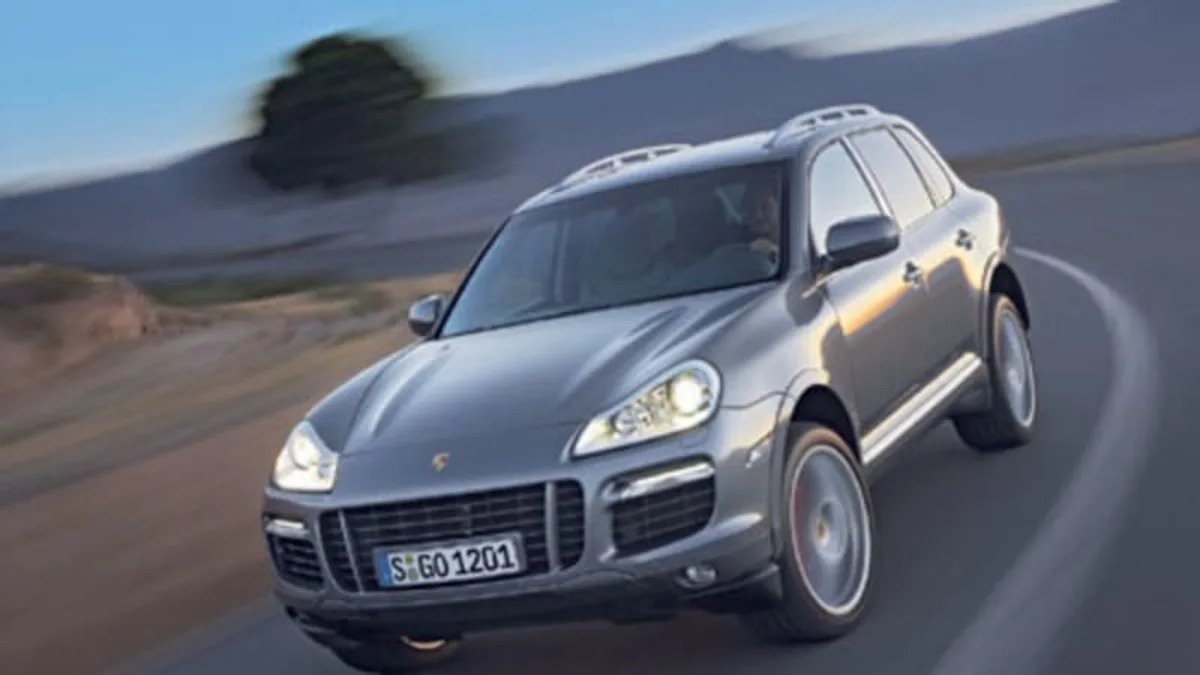

Sign in to post
Please sign in to leave a comment.
Continue